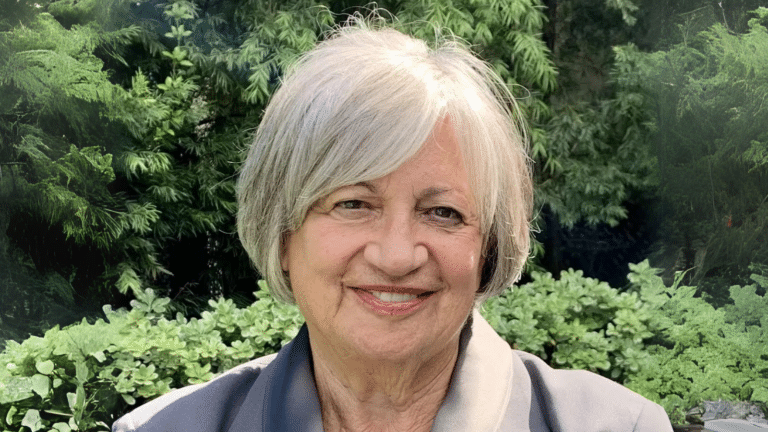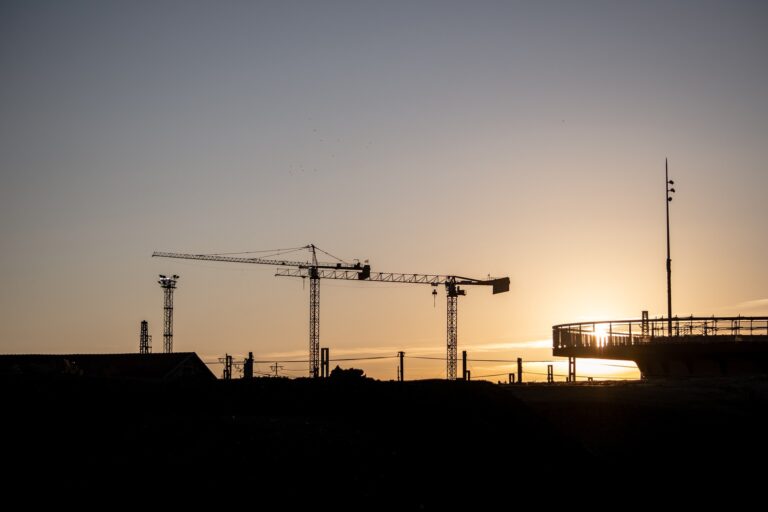L’UE annonce une rupture totale avec les hydrocarbures russes d’ici fin 2027
L'essentiel de l'actualité du gaz naturel, des gaz renouvelables et de l'hydrogène
Current Access Level “I” – ID Only: CUID holders, alumni, and approved guests only
Chairman and former CEO, Pioneer Natural Resources
U.S. oil production from shale will reach nearly 7 million barrels a day in May – roughly the same amount as the entire U.S. production of oil five years ago. Nearly half of this shale output will come from the Permian Basin, the stretch of shale in west Texas and southeast New Mexico.
To understand how the shale revolution is impacting the U.S. energy industry and what’s in store for the future, host Bill Loveless sits down with Scott Sheffield on a new episode of Columbia Energy Exchange. Scott is the chairman and former CEO of Pioneer Natural Resources, a Texas-based independent and a leader in shale development in the Permian Basin. He is also an advisory board member at the Center on Global Energy Policy.
Scott and Bill discuss the phenomenal growth in the Permian and other shale regions, capital discipline among independent producers, and the challenges they face in terms of insufficient pipeline capacity and rising costs. They also touch on U.S. energy policy, including the Trump administration’s efforts to deregulate aspects of the oil industry and efforts to expand production offshore and on federal lands.
[00:00:00]
Bill Loveless: Oil production from Shale in the U.S. continues to grow increasing the nation’s stature in world oil markets and nowhere is that growth more pronounced than in the Permian Basin, that stretch of Shale in West Texas and Southeast New Mexico. Hello, I’m Bill Loveless and welcome to the Columbia Energy Exchange, a weekly podcast from the Center on Global Energy Policy at Columbia University. Our guest today is someone whose company is one of the largest operators in the Permian basin.
Scott Sheffield is the Chairman of Pioneer Natural Resources, a Texas based independent. And for a long time, he was the CEO of Pioneer and its predecessor, Parker & Parsley. Scott is truly a pioneer of the Permian Basin adopting the fracking and horizontal drilling technologies that have made Shale production possible. He began his career as petroleum engineer in the 1970s when he recalls being taught that Shale does not produce. How times have changed?
As we spoke, the U.S. Energy Information Administration was reporting that U.S. oil production from Shale will reach nearly seven million barrels a day in May, roughly the same amount as the entire U.S. production of oil five years ago. Nearly half that Shale output will come from the Permian Basin. Scott who is on the advisory board of the Center on Global Energy Policy sat down with me outside the center’s recent 2018 summit in New York.
We talked about the phenomenal growth in the Permian and other Shale regions, the capital discipline or lack of it among independent producers in those areas and the challenges they face in terms of insufficient pipeline capacity and rising cost. We also touched on U.S. energy policy including the Trump administration’s efforts to deregulate aspects of the oil industry and to expand production offshore and on federal lands. Here’s our conversation. Scott Sheffield thanks for joining us on the Columba Energy Exchange.
[00:02:11]
Interviewee: Bill, it’s a pleasure. It’s great to be here.
[00:02:13]
Interviewer: Appreciate that. Let’s for our listeners’ sake, learn a little bit about you. You grew up in the oil business as the son of a petroleum engineer who worked for the oil company ARCO. What was that like?
[00:02:29]
Interviewee: It was interesting because I remember when I was about 12 years old; I’m the oldest of three children. My parents and — we were living in Houston, Texas. My dad and mom come up to us and gets us all together and says we’re moving to Tehran, Iran, of all places —
[00:02:43]
Interviewer: Wow! When was this?
[00:02:44]
Interviewee: –when I was 12 years old, so —
[00:02:46]
Interviewer: What year?
[00:02:47]
Interviewee: ’64. And so, in ’65, we moved to Tehran and I was there from eighth grade all the way to the 12th grade and graduated from Tehran American High School.
[00:02:57]
Interviewer: Really, wow!
[00:02:58]
Interviewee: During the Shah’s times. So, I’ve always loved the Iranian people. They loved Americans at that point in time. But our governments obviously have been far apart the last — since 1979, I guess.
[00:03:09]
Interviewer: Right, right. Obviously, but it gives you that international perspective. And then you went on to become a petroleum engineer yourself.
[00:03:17]
Interviewee: Yes, at the University of Texas, Petroleum Engineering degree. Left university and went to work for Ameco for about a five year period and joined this little company called Parker & Parsley out in Midland Texas as the fifth employ.
[00:03:32]
Interviewer: And within five years, I noticed, you were the CEO.
[00:03:35]
Interviewee: Yes, I was very fortunate enough; both Joe Parsley and Howard Parker recommended me for the job when they sold out to the real estate conglomerate. And so, became CEO in 1985 at 32 years old.
[00:03:49]
Interviewer: Wow! And then you went on of course — that company went on to become Pioneered Resources and you continued as the CEO and as you say, held that job quite some time.
[00:03:58]
Interviewee: Yeah, 1997, I was approached by a unique person, Richard Rainwater, probably one of the smartest financial persons in U.S. history. He recently passed away, but he’s the one that made the Basses very wealthy. So, he had taken control of Mesa, Boone Pickens’ company. He approached me about merging the two companies together and running it. So, after about year of negotiating, we finally did and moved the company to Dallas and renamed Pioneer natural resources.
[00:04:29]
Interviewer: Yeah, interesting because location is everything. It’s a company that’s been throughout its history primarily involved in the Permian Basin. I want to get to that in a minute. But just wanted to talk a bit about Shale production generally in the United States. New information from the U.S. Energy Information Administration tells us that U.S. oil production from Shale will grow by 125,000 barrels a day and reach nearly seven million barrels a day next month, month of May. As the news outlet Axio noted, that’s roughly the total amount of oil production nationwide five years ago. Are you surprised by this growth?
[00:05:11]
Interviewee: Yes, in fact in school, they taught us that Shale does not produce as engineers. And so now, we have seven million barrels a day out a total of 10.5 and then he’s predicting May will be 10.5 million barrels a day. So, almost 70% is coming from U.S. oil Shale and that’s all happened in the last eight, nine years. So, that’s what’s amazing to me.
[00:05:38]
Interviewer: Yeah, and of that — of that — in the EIA report, I imagine Permian production is expected to rise by 73,000 barrels a day to 3.2 million barrels a day. You said in the past that the Permian Basin may hold as much as 75 billion barrels of oil which would make it comparable to the Saudi Arabia’s Ghawar field, the largest oil field in the world. I mean that’s — it’s hard to believe.
[00:06:09]
Interviewee: Yeah. To be more specific, I was referring to the Midland basin, not just the Permian Basin. So, we’ve left off to Delaware. Delaware probably has another 50 billion, 60 billion. So, the Midland basin which is where the Spraberry Trend area field sits has 75 billion and the Delaware basin — people are drilling in about five to six fields there. They’re not connected yet. They probably will be at some point in time. But those fields may get probably about 50 billion, so that puts us at about 125,000 billion barrels of resource potential in the Permian basin. That’s what’s amazing and it is the second. So, instead of just saying the Spraberry is the second largest field now in my speeches, I just talk about the Permian basin as general in whole, it will be the second largest compared to Ghawar in Saudi Arabia.
[00:06:54]
Interviewer: And how times have changed?
[00:06:55]
Interviewee: Yes, exactly. So, they’re very important to our energy security and to the U.S. economy because of what’s happened in the Permian basin.
[00:07:03]
Interviewer: Yeah. And it’s about the technology. Now your company Pioneer is drilling and before that, Parsley — Parker & Parsley, I mean were drilling in the Permian primarily, correct, doing it in the old fashioned sort of way vertically.
[00:07:17]
Interviewee: I didn’t get a chance to finish up what happened after ’97. After the merger, I was just like most CEOs; I gave up on the U.S. So, we actually took the company international around the world and then when Shale — when George Michel had success in the Barnett Shale, we made the decision to come back to the Permian, also come back to South Texas where we — one of the initial discoverers of the Eagle Ford Shale play, so we sold all of our international assets, went back to the Permian and today the company has announced that we’re going to sell our last three remaining assets and be simply a Midland basin, Permian basin company. So, that’s what’s amazing to me and it’s because of the economics that we see today and the fact that we don’t have to explore anymore. We know where it is.
[00:08:05]
Interviewer: Right, you’ve got good rock and you understand what’s in that rock.
[00:08:08]
Interviewee: Exactly.
[00:08:09]
Interviewer: I mean you speak of the economics of that field. At what price can companies make a profit in the Permian basin these days?
[00:08:17]
Interviewee: We refer to a Citi report — Citi Bank has a report that shows the breakeven price of all the various Shale basins in the Midland basin is — Pioneer is listed as number one, lowest breakeven, $19 — $20 breakeven price. And so, anything about $20, you start getting your money back. So, you really need something to get a 10%, 15% return. You need something probably in the mid 30s, long term. And the company has come out recently over the last 12 months saying it’s going to a million barrels a day plus and it could easily do that at $45 oil price flat for the next 10, 20 years.
[00:08:56]
Interviewer: Wow! And as we speak, WTI had just hit $69, so, which was the highest level for WTI in some three years.
[00:09:07]
Interviewee: Exactly. So, I’ve been very surprised, the success of the Saudi Russian relationship. Generally when OPEC announces something to cut production, people tend to cheat over time. They even brought in several non-OPEC countries, especially Russia. So, I’ve just been amazed at the connection between Saudi and Russia and how it’s working even though they’re at odds in places like Syria, Iran and other places.
[00:09:32]
Interviewer: Yeah. As we sit here, they’re getting ready to talk again, the Saudis and the Russians to see if they continue that.
[00:09:39]
Interviewee: Extend it. You can talk about five years to a 20 year pact which is amazing to me.
[00:09:44]
Interviewer: What’s — I mean before — I want to get back to the Permian because it’s such a fascinating story. But just for the sake of context, when you look at U.S. oil production overall, what’s your view on long term U.S. oil production? Again, going back to EIA, they’re projecting U.S oil production will average 10.7 million barrels a day in 2018 which would surpass the previous record of 9.6 barrels per day set in 1970 — 2019 EIA sees oil going up to 11.4 million barrels a day.
[00:10:20]
Interviewee: Yes. As we all know, the actual data versus projection data runs about four months behind. But what’s amazing to me, last November’s actual production passed an all time high set back in late 1970 after the North Slop oil came on in the last 60s. And so, going forward, I’m a firm believer that we’ll get to 15 million barrels a day. It will probably slow over time. We’re growing, last year grew about 1.1 million barrels a day when you always look at the calendar months not going — I look at the 12 month period. So, we actually grew 1.1 million barrels a day. And I think this year will probably be more in the 1.3 million barrels a day from year end 2017 to year end 2018, we’ll grow about 1.3 million barrels a day. And roughly about 800,000 will be from the Permian. We had about 800,000 from the Permian last year, of oil. Probably they have another 800,000, it can be a little bit higher. There are some issues I’ll talk about later with you, the backwardation, the constraints, pipeline constraints, people constraints, but I’m predicting another 800,000 long term in our discussion. Long term, Permian basin will get up to somewhere — seven million barrels a day, it could go higher. But at least seven in the next 10 years from the 3.2 that you mentioned earlier.
[00:11:40]
Interviewer: Interesting. You know, one time we used to talk about peak oil, when oil production hit a peak. We don’t really talk about that as much anymore. I mean do you even have a guess on that anymore or is it just an issue that you consider to be off the table?
[00:11:53]
Interviewee: I think people — they do mention the fact that conventional did peak in 2007 around the world. So, if you look at conventional production, it did peak in 2007. Shale technology has changed that. The main Shale plays outside the Permian, like Eagle Ford, it may have peaked already. It got up to 1.7, fell back to 1.1 — 1.1 million barrels a day. Now, it’s back up to 1.25. There’s about 25% of the rig count in the Eagle Ford and the Bakken is where we’re running today that they had in 2014. So, they each had over 200 rigs running horizontal rigs today. It’s about 25% to 30% of the rig count. So, they were both — they have the difference between those plays, the Permian and Permian has 4000 feet of Shale. The Bakken has about 300 feet of Shale and then the Eagle Ford has about 300 feet of Shale. And so, least is — the Permian also is different in those two plays primarily because a lot of vertical production held the leases by production. The Eagle Ford and the Bakken were land grabs. People went out and leased it and they had to drill it up fast before it expired, they lost the land. And so, both Bakken and Eagle Ford grew very quickly. And so in my opinion Eagle Ford has probably already peaked. Bakken is probably climbing back up a little bit. It may get up to 1.5. But it’s close to peaking too. So, we’re really left with the Permian basin in the U.S.
[00:13:18]
Interviewer: And that has a long way to go in your estimation.
[00:13:20]
Interviewee: A long way to go. We’re only drilling three benches. There’s about 12 benches of that 4000 feet of Shale and people are only focused on three of those benches. So, we’ve got another nine benches of Shale formation to drill as we play out the Permian basin over the next several years.
[00:13:37]
Interviewer: Do we need as a nation to look elsewhere much for oil these days? I mean we used to look a lot at the Gulf of Mexico. There’s still a lot of oil production that comes out of the gulf. But, you know, it’s taken a back seat now to the Shale and to the Permian basin.
[00:13:54]
Interviewee: Yes. The Gulf of Mexico is flat at about 1.7 million, 1.8 million barrels a day. I don’t think EIA is predicting maybe a slight increase to 1.9 about 2020. But if you look at that last lease sale, probably very low interest in that last lease sale. I think it’s about $120 million went into the — even with increased royalty and things that the federal government did. And the reason is that the depth of the inventory of most majors especially like Exxon and Chevron, their two biggest capital commitments around the world is the Permian basin. Exxon now is running — they’ve announced there will be up to 30 rigs in the Permian basin. For the first time in over 30 years, Exxon will be the number one operator in the Permian basin. So, a total change of mindset and Chevron is tied with us at number two.
[00:14:40]
Interviewer: You think we’re going to be seeing a lot more big oil money coming into the Permian?
[00:14:45]
Interviewee: In discussions with the European majors, Shale is the only other one that has a position. BP and Total, saying it’s too expensive for them to get in. They want to get in the Permian, but they missed it. In fact, BP acquired Ameco as you know and Arco overtime and plus, BP, they probably were the biggest holders of Permian basin acreage, probably 20, 25 years ago. Today, they have very low, almost nothing. But the Europeans are saying it’s too expensive, so it’s up to Shale now. They have a great position in the Delaware basin, they’re increasing activity. So, I don’t see any of the other majors coming in besides those three.
[00:15:24]
Interviewer: Do you see much interest among majors or independents for that matter in investment elsewhere in the United States? Kind of gets back o that question I asked a minute ago whether it’s offshore in the Gulf of Mexico or anywhere else, maybe, you know, the administration is talking — the Trump administration is talking about opening up the east and west coasts and more offshore acreage off Alaska. Is there — with all the opportunity in the Permian basin, why would oil companies be looking to go anywhere else in the United States right now?
[00:15:51]
Interviewee: I don’t think they want. The independents definitely will. In fact, we had a chance to go into Mexico over the last 10 years. Mexico opened up and we have a 100 year inventory in the Permian basin. So, why should Pioneer look into Mexico? But Mexico was supposed to be the next big horizon for people to go into. But there’s still risk as we al know in Mexico and especially with the election coming up. But I just don’t see much interest if the Trump administration opens up the rest of the — whether it’s east coast or west coast or even Alaska, I just don’t see a lot of interest at this point in time because of the deep reserve potential in the Permian and other places like the Bakken and Eagle Ford.
[00:16:29]
Interviewee: You know, in the past Wallsten analysts have criticized exploration and production companies for lacking capital discipline. But they seem to have found such discipline or increasingly now.
[00:16:42]
Interviewer: Would you agree with that, and if so, how long will that last?
[00:16:47]
Interviewee: Yes, I think the oil and gas industry, including the majors and independents have been probably one of the most poorest performing industries in the S&P500 over the last 10 years. We did have to go through two down cycles in 2009 and late 2014, so, two collapses of oil prices that lead to that. But we have over spent and it takes — it’s technology driven, lot of seismic — a lot of horizontal drills, all horizontal drilling. And so, a lot of science went into it. So, independents did over spend.
Most independents typically will sell assets to fund it or raise equity. Some use debt, but people have learned, I think this last lesson, ’09 and also this last less, there was over $100 billion worth of bankruptcies in the oil and gas industry in the U.S. in 2014 through — there’s one company that went bankrupt just a couple of weeks ago. But I think people have learned their lesson on that. And so, a group of investors got together about 18 months ago in New York and they started to push for more disclosure, return on executive compensation being focused on return on equity, return on capital employ.
And so, what’s happened, what’s amazing in this first quarter of all the public companies, there were seven misused independents. There were $7 billion worth of stock buybacks announced and $700 million of dividend increases to their shareholders. So, yes, I see — and also the rig count. That kept the rig count from going up to another 75 to 80 rigs. So, people are focused more on discipline. They’re focused on returning more capital back to the shareholders and that’s been a total mindset change over the last 12 months and I think it’s good.
So, it’s good from a standpoint of shareholders, from the standpoint if we need the Permian to produce more oil, if we get into a shortage situation, the question is how fast — what will be the mindset of the CEOs in the Permian basin. Will they have 30 rigs, 300 rigs that will be able to supply the oil, I don’t know. It’s going to be an interesting test if that happens.
[00:19:00]
Interviewer: Yeah.
[00:19:01]
Interviewee: So, I’m a little afraid of oils getting too high, right now, 70.
[00:19:04]
Interviewer: Interesting.
[00:19:05]
Interviewee: When MBS says he wants to — I mean two weeks ago, he said he wanted 80, now he’s saying he wants $100 a barrel. I think somewhere $70 to $100 is going to get too high. It’s going to affect old demand. Gasoline prices will start going up to the American consumer. It will start going up around the rest of the world and it could be a backlash. I’d rather stay in that $60 range myself personally.
[00:19:27]
Interviewer: Did you ever think you’d see the day when you’d say — you were kind of concerned that the price of oil was going too high.
[00:19:33]
Interviewee: I said that in 2008 when it got up to $120, $130, it’s going too high. It brings on alternative energy. It helps the wind, the solar people. It helps all alternative energy sources. And so, we need to remain one of the cheapest sources, especially in the days they were facing the climate change and the pushback on hydrocarbons around the world in general. We had to be very competitive and high oil prices is not going to help that.
[00:20:03]
Interviewer: M&A activity, merger and acquisitions; why haven’t we seen more consolidation in the U.S oil and gas sector? I was reading a report from the accounting firm PWC that said American oil and gas producers are striking a lot of deals, but they’re now focusing on smaller mergers and acquisitions. Why is that?
[00:20:27]
Interviewee: Yes, it’s a combination. It’s back to what the investors want. There was a recent deal a couple of weeks go down. It’s the largest deal in the Permian basin. Concho Resources acquired RSP and it was a $9 billion transaction. Before that Exxon had $6 billion for Bass Steel which is in South Easters New Mexico. And so, those are the two largest deals. But over the last five years in the Permian, it’s been smaller independents and private equities selling out.
In fact, Exxon’s two largest deals, both in the Midland basin and Delaware were with private families. The reason you haven’t seen major consolidation is it dates back — number one, Exxon’s XTO purchase. So, most investors look at XTO as not a very good acquisition. The timing was wrong.
[00:21:16]
Interviewer: There was a bid by Exxon to really get big in natural gas.
[00:21:19]
Interviewee: In natural gas, so they bought at a time natural gas was too high. And it turns out XTO did not have a lot of oil Shale. They had mostly gas Shale. So, that’s number one. Number two, most independents, CEOs, they want to sell out at a decent premium. And their acreage, like in the Permian, acreage is already trading at 50,000 to 60,000 per acre inside a public company. And so, when you put a premium on top of that, it makes it very, very expensive for that to happen.
I think over time as people’s inventory start to decline over the next three to five years, I think you’ll see some consolidation more on the smaller companies to get bigger so they can be more well capitalized. That’s one of the reason I think Concho and RSP got together. But I don’t think you’ll see any of the majors start paying huge premiums going into the Permian basin.
[00:22:11]
Interviewer: Let me get back, Scott, to something you touched on a few minutes ago and that was some of the challenges that you see in the Permian basin. There was a headline this week in the Wall Street journal that said is the U.S. Shale boom choking on growth.
[00:22:25]
Interviewee: Yeah. It was today’s Wall-Street Journal, I think.
[00:22:28]
Interviewer: And they talked about some of the challenge that they industry faces there in terms of — well, one was pipeline constraints. There’s not enough pipeline capacity there as well as the cost of things. Tell me a little bit about those challenges.
[00:22:46]
Interviewee: Yeah, we had a bone back in 2014 when oil got up to $100 a barrel. So, the Permian was at a point to where it experienced it’s first boom time since probably 1980, ’81. And the prior booms in the Permian basin have all been — a lot of it’s been through exploration drilling. And this is different. I’ve told the people of Midland, I’ve given speeches, you’re on your way — there were 100,000 people five years ago and I said you’re on your way to 250,000 people and nobody believed me.
Almost five years ago and I said the difference is in these booms, the oil is there. You could compete with Saudi Arabian crude. So, it’s going to be drilled and — so, the Permian basin never did slow down with the collapse in ’15-’16. The Permian basin, Pioneer for instance — Concho didn’t. Exxon, Chevron didn’t. Everybody kept their rigs running because what happened — technology, we started with — we use more water, more sand and the wells were getting better and better and we started going out from 5000 feet horizontal laterals to 10,000, to 12,000.
So, the wells were getting better and better and better and that’s all of a sudden we realized our breakeven price, it went to $60. We lowered it all the way down to $20 in the Permian basin, our breakeven price. And so, what has happened that day is that the activity is higher than it was in 2014. So, when you look at the actual rig count, the rig count is lower, but you’ve got to look at the horizontal rig count. The horizontal rig count is 15%, 20% greater than it was in 2014. And so, that’s why if you look at Texas’ statistics, we have the highest apartment rates now.
We have the lowest unemployment in the state of Texas at 2% in Midland. And so, we can’t find enough people, we can’t find enough truckers to drive the trucks, not enough pipelines being built. So the MLP — we have to rely on the MLP industry and the MLP industry has been slow to adding pipelines.
[00:24:43]
Interviewer: And that’s to limited partnerships.
[00:24:45]
Interviewee: Exactly.
[00:24:45]
Interviewer: Which is prevalent — prevalent form of ownership for pipelines.
[00:24:51]
Interviewee: And we stated earlier that the Permian basin is growing at 800,000 barrels of oil per day. So, we need two major pipelines every year as long as growing 800,000 barrels of oil per day. In addition, we’re adding two to three BCF a day per year. So, we need another one of natural gas — so, we need one to two major pipelines taking the natural gas to the gulf coast or t Mexico depending on what happens with NAFTA relations in the upcoming election. It’s happening in July of this year. And so, those are the constraints. The pipelines aren’t getting built fast enough. We can’t get enough people quick enough.
We can’t get enough living conditions in Midland Texas to house people. Then the third issue, most people have learned to deal with — and that’s water and sand. So, water and sand, we used to use all freshwater. And so, there’s been a pushback by communities not to use freshwater. So, Pioneer for instance has moved toward using water from cities. So, we’re using the affluent water from the cities of Midland and Odessa. So, we’re actually fracking with that type of water. We’re cleaning it up even more so than the cities did and we’re buying it from the cities in long term agreements.
[00:26:08]
Interviewer: This is water that’s coming out of their waste water — their sewer plants?
[00:26:10]
Interviewee: Waste water, yes. And —
[00:26:13]
Interviewer: Interesting.
[00:26:13]
Interviewee: And people are going to non-potable water, non-potable zones such as — they call the Santa Rosa formation. You can’t drink it. And so, people are using — they’re going below the freshwater table to other water zones. And so, we found plenty of water outside of freshwater and sand and what’s happened is that in the Monahans sand dune areas, there’s a lot of people —
[00:26:37]
Interviewer: Where’s that Scott?
[00:26:38]
Interviewee: That’s about half way between the Delaware basin and the Midland basin. So, it’s probably about 100 miles due west of Midland, Texas. And so, people have found a lot of due sand mines over the last 18 months. So, instead of bringing all the way down from Wisconsin and Michigan, white sand, people have found sand probably 50 to 60 miles from their drill sites. So, we solved the water and sand. So, the biggest constraints are really people and secondly the pipelines and they’ll get solved over time.
[00:27:11]
Interviewer: Okay. Because I was going to ask you, you know, are those obstacles still enough of a concern that in fact, you know as a head line — the Shale boom could choke on its growth.
[00:27:23]
Interviewee: I don’t believe that. I think they were trying to create a story. The oil is there, the rock is there, some of the best rock in the world. We just need a few more people and a few more pipelines. And the pipelines in that area, they’re all intra-state. So, they’re basically going from west Texas to the gulf coast which is what’s amazing to me. I don’t know if you have this question in there, but is the export — it’s lifting the export ban that happened in 2016.
[00:27:50]
Interviewer: I was going to ask you that. You of course were leader in the industry and seeking the move by the government to eliminate the restriction on exports of U.S. oil that happened I guess back in the end of 2000 —
[00:28:02]
Interviewee: ’16.
[00:28:02]
Interviewer: ’16. You know, I think of another headline on that story Scott, and that is — I don’t remember the exactly headline, but the gist of it was whether the industry — there’s so much Shale like oil being produced from these Shale plays that the U.S. refineries are running out of the means of accommodating it. I mean they rely more on heavy crude. Does that create a problem at some point for Shale producers?
[00:28:29]
Interviewee: Yes. The entire gulf coast industry revamped itself about 20, 25 years ago to run heavy crude. Heavy crude comes from Venezuela, Mexico and Canada. And so, Canada has been stunning with the Keystone Pipeline, they can’t get the pipeline through even though Obama rejected it over about an eight year term, Trump has approved it. But they’re still having trouble getting it through the various states. So, it hasn’t even started yet.
So, the question is where does Canadian crude go, can it get to the gulf coast. Venezuela as you know, we’re having issues with the Venezuelan government and we’re looking at imposing sanctions whether or not we should bring even any heavy oil. And then thirdly, Mexico is where we have an interesting election coming up. And so, the entire refining system is very dependent upon heavy oil. So, when we start producing all these light sweet crude, they didn’t want it. They were giving $5, $10 discounts on that crude.
And so, we went to the administration and went to Congress and got the band lifted and Obama did that the last two weeks in office in 2016. And now, we’re exporting 2.3 million barrels of oil per day and it’s going all around the world. It’s going to Europe, it’s going to Asia and it’s been a boom.
[00:29:47]
Interviewer: And you see enough of a market continuing to develop for that U.S. oil that light oil —
[00:29:52]
Interviewee: Yes, light sweet crude.
[00:29:53]
Interviewer: –that it’s not going to create a problem for the producers given the difficulties that the U.S. refiners have.
[00:29:58]
Interviewee: Exactly. In fact, we’re getting WTI plus three dollars in most of our cases because there’s a difference right now between brand and WTI of about $5 to $6 and as long as differential is there, then we actually get a bonus, a better price by exporting that crude.
[00:30:15]
Interviewer: You know, speaking of that, the export, the change in that policy, what other — when you look at U.S. energy policy today, what do you make of it? I mean the trump administration is looking to lift restrictions on oil and gas development. Is it deregulatory administration? Having won the battle on the oil exports, is there another one you see that’s necessary for the industry to fight in Washington these days?
[00:30:45]
Interviewee: I personally don’t think that a lot of the changes the trump administration is doing is going to help the industry long term. It’s helping it on federal lands. 99% of the wells today are drilled on private lands. And so, some of the regulations that were imposed were on federal lands. So, people have been — have stopped drilling on federal lands a long time ago. And so, most of them were drilling on private lands anyway. And so, we at Pioneer are leaders in regards to — in regard like methane gas leaks.
We’re a leader in installing the vapor recovery units and other equipment to make sure that we’re not leaking a drop or a — one MCF a day from our well sites. And so, we’re doing everything we can to make sure we don’t allow methane gas to escape into the atmosphere. The Obama government put in some regulations on federal lands; they never got them on — pretty much on private fee land. And so, I really don’t see really anything big the Trump administration can do in that regard.
So, I think whether we commented already on the deep water, east coast west coast, I just don’t see people investing in that or Alaska, long term. It maybe important. I can’t tell what’s going to happen 20, 30 years from now. But I just — the majors aren’t going to make that — you have no idea what the price of oil is going to be 20, 30 years, so how can you make an investment somewhere in North Slope of Alaska or sorry, east coast or west coast?
[00:32:19]
Interviewer: [Crosstalk] [00:32:18].
[00:32:20]
Interviewee: And more so.
[00:32:22]
Interviewer: How big of a risk is climate change as an issue and as an investor issue to the oil and gas company industry these days?
[00:32:31]
Interviewee: I look at it simply as the world of seven billion people. You start with the people. We’re using a lot more hydrocarbons around the world. Agriculture is probably your number one — you never hear anybody talk about agriculture. But if you look at farming and the cattle industry, they’re the number one provider of methane gas. The oil and gas industry is number two. The oil and gas industry is generally picked up on — it’s picked on, in my opinion, probably a little bit too hard because people aren’t going to go after agriculture.
We need food to survive. And so, they’re going after oil and gas industry. Long term, hydrocarbons are going to be there for a long period of time, but they’re going to immensely decline. So, I’m a firm believer, we need to move to alternative energy. There’s the balance. I wish people could all work together more evenly in regard to using those sources. So, I love the fact that solar and wind costs are declining. Batter costs are declining significantly because eventually we are going to run out of oil and gas.
You imagine, if it weren’t for the Shale revolution today, we’d probably be having $200 barrel oil because, you know, can you imagine if you take that seven million barrels a day off the market if it weren’t for Shale oil? You take seven million barrels a day off the market today, where would the price of oil be? So, we need oil long term. But eventually, I am for a climate solution to where we will produce as a world less hydrocarbons long term.
[00:34:00]
Interviewer: So much has changed in the recent years. You’ve seen so much change over the course of your career. Scott Sheffield thanks for joining us on the Columbia Energy Exchange.
[00:34:09]
Interviewee: Thanks Bill. Enjoyed it very much.
[00:34:12]
Interviewer: And thanks to our listeners too. If you have a few moments, give us a rating on iTunes and tell us what you think of the podcast. We’d love to hear from you. And for more information on the Center on Global Energy Policy, go to our website at energypolicy.columbia.edu or follow us on social media at columbiauenergy. For the Columbia Energy Exchange, I’m Bill Loveless. We’ll be back again next week with another conversation.
[00:34:47]
California has long led the nation in pioneering clean air regulations, from grappling with smog to setting ambitious zero-emission vehicle mandates. The Golden State's unique authority under the...

In the growing conflict between Israel and Iran, many questions now loom, including the extent of US involvement, the potential for regime change, and the status of Iran’s...

Climate imperatives, national security, and the need for reliable, carbon-free, dispatchable power to meet rising electricity demand are all contributing to a resurgence in nuclear energy. The United...

On June 12th, Israel carried out overnight airstrikes targeting Iranian nuclear facilities, military infrastructure, military leaders, and nuclear scientists. While the full scope and implications of the attack...



On March 31, the US Treasury Department issued guidance on tax incentives for vehicle batteries and minerals under the Inflation Reduction Act (IRA).
